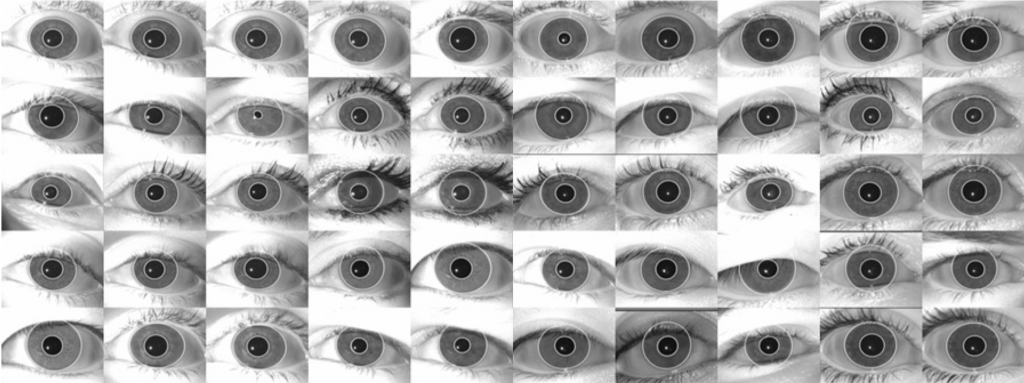
Iris segmentation
Iris segmentation is an important step in iris recognition as inaccurate segmentation often leads to faulty recognition. We developed an unsupervised, intensity based iris segmentation algorithm. The algorithm is fully automatic and can work for varied levels of occlusion, illumination and different shapes of the iris. A near central point inside the pupil is first detected using intensity based profiling of the eye image. Using that point as the center, we estimate the outer contour of the iris and the contour of the pupil using geodesic active contours, an iterative energy minimization algorithm based on the gradient of intensities. The iris region is then segmented out using both these estimations by applying an automatic version of GrabCut, an energy minimization algorithm from the graph cut family, representing the image as a Markov random field. The final result is refined using an ellipse-fitting algorithm based on the geometry of the GrabCut segmentation.
Iris Segmentation using Geodesic Active Contours and GrabCut. Banerjee, S.; Mery, D. Proceedings of Workshop on 2D & 3D Geometric Properties from Incomplete Data, in conjunction of the Pacific Rim Symposium on Image and Video Technology (PSIVT 2015).
Sparse Feature Representations for Presentation Attack Detection in Iris Recognition
In this project, we propose to explore using sparse representations of signals to develop iris image features that would generalize well on unknown attack types. We believe that sparse representations will serve as good features in one-class classification problems (a.k.a. anomaly detection, or open-set recognition), when only a positive class (here: live irises) is well populated by samples, and the negative class (here: artificial objects) is only modestly represented by training examples, or such training examples do not exist.